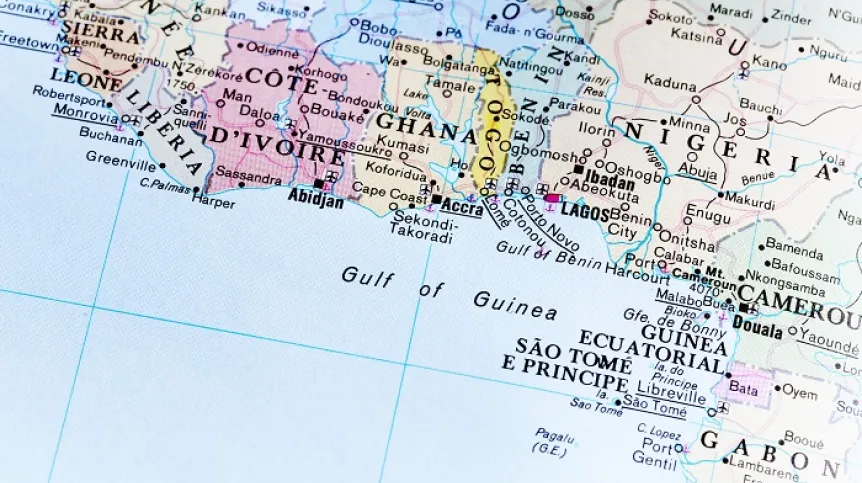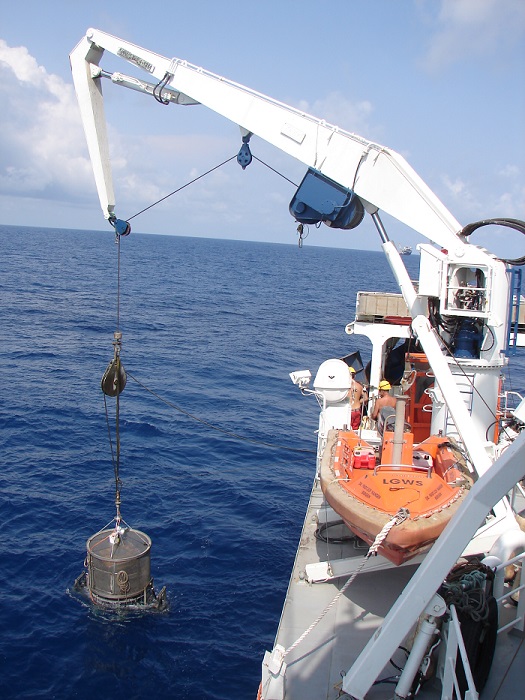
Biologists from the University of Łódź in cooperation with scientists from the Institute of Marine Research (IMR) in Bergen have discovered over 300 new species of organisms living on the seabed off the coast of Ghana.
Although the research project took place in 2012, it has taken eight years to analyse the collected material. The first scientific papers were published in 2020, and the most recent (but not the last) one in December 2023.
The leader of the team Dr. Hab. Krzysztof Pabis, from the university’s Faculty of Biology and Environmental Protection. His research group members are: Dr. Robert Sobczyk, Dr. Anna Stępień, Dr. Piotr Jóźwiak and Krzysztof Podwysocki.
'The seabed is still a mystery to scientists, and the coast of West Africa is one of the least known areas on Earth. A blank spot on the map of marine research are the ocean depths of this region, about which we knew literally nothing until recently. Our research has significantly increased knowledge about the local fauna and made it possible to assess the condition of the marine environment, which is particularly exposed to the impact of human activity, such as oil and gas extraction and climate change, Dr. Pabis says.
The program enabled researchers to collect 270 samples from the seabed along the coast of Ghana, from depths reaching 1,000 m. 'Although we explored only 12 square meters of the seabed area, in this area, corresponding to the size of a small room in a block of flats, we found about 800 species of organisms, about 300 of them new to science,' Pabis says.
The research materials also include video recordings showing life on the seabed.
As the researchers describe in the video presenting their research, the data analysis process was extremely tedious - several millimetre-long organisms living in sand and silt had to be searched for under a microscope.

Two groups of small animals dominate the studied part of the bottom of the Atlantic Ocean. These are polychaetes, the marine cousins of earthworms, and crustaceans.
The largest group of organisms were polychaetes - over 250 species, including about 100 new to science. 'They are among the most unusual marine animals. Some hunt by ambushing their prey, like lions on the savannah. Others drill corridors beneath the surface of the seabed. Many of them search for various remains or other dead organisms on the bottom surface, and their behaviour resembles that of hyenas,’ Paris tells PAP - Science in Poland.
In his opinion, one of the most interesting species in general was a brightly coloured red-orange predatory anemone that 'looks like a sea monster with a wide open mouth.’
Dr. Pabis adds that the team was somewhat surprised by the very high number of species unknown to science. 'On the one hand, this is a common situation in very poorly known regions of the Earth. However, our research has shown that scientists' view of biodiversity of the African coast must completely change,’ he says.
In addition to the discovery of new species of organisms, the most important research results allowed the biologists to assess the condition of the marine environment in a region threatened by human pressure, especially oil and natural gas extraction and climate warming.
According to Pabis, the published studies will become a reference point for zoogeographic and ecological research and biodiversity assessment for many years to come.
'They have already indicated the need to change existing beliefs about the borders of the Atlantic regions. In addition, we have identified the most vulnerable areas of the seabed and places in need of urgent protection, we have also identified species that are potential indicators of changes and presented guidelines for future monitoring. However, above all, we managed to better understand the complex relationships between living organisms and various physical and chemical factors, especially toxic substances entering the ocean as a result of human activity,’ he says.
The research was financed by the Norwegian Institute of Marine Research in Bergen and FAO - the Food and Agriculture Organization of the United Nations.
The biologists have now started a project with scientists from the University of the Azores to research the seabed around the Mid-Atlantic Ridge, in the vicinity of the Azores archipelago. 'The materials have already been collected and we are currently at the stage of data processing,' Pabis says.
Find out more about the research of scientists from Łódź here.
PAP - Science in Poland, Agnieszka Kliks-Pudlik
akp/ bar/ kap/
tr. RL













